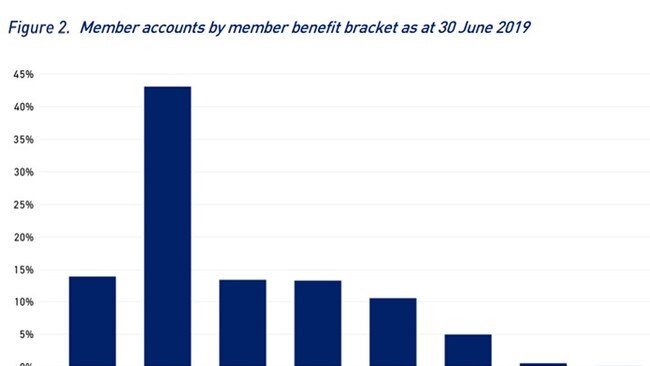APRA heatmaps identify worst super performers
Regulators identify super industry laggards and warn funds to address weaknesses or either merge or exit industry.

The prudential regulator has identified laggards in the superannuation industry through detailed “heatmaps” assessing returns and fees, as it warned funds to address weaknesses and underperformance or look to merge or exit the industry.
As well as the so-called heatmap, the Australian Prudential Regulation Authority released a paper showing superannuation member outcomes varied “widely across the industry” and underperformance spanned all industry sectors and investment profiles.
“Higher fees are generally correlated with lower net returns, although there are exceptions,” APRA’s paper found. “Low balance accounts are most impacted by administration fees, while high balance accounts are most impacted by percentage-based fees.”
READ MORE: Super funds under pressure | Super mergers predicted
The heatmap - which is colour coded so that red denotes lower performance and higher fees - provides an assessment of MySuper products, which are meant to be low cost and simple superannuation options.
For disclosed fees on MySuper account balances of $10,000, among the worst performers were BEST Superannuation at 3.79 per cent, First Super at 1.78 per cent, the Pitcher Retirement Plan at 1.73 per cent, IAG and NRMA at 1.59 per cent and the AMP Retirement Trust at 1.54 per cent.
Among the worst performers on five-year net investment returns per annum, were Pitcher Retirement at 5.85 per cent, Energy Industries Super with 6.19 per cent and Maritime Super at 6.23 per cent.

“Since releasing an information paper and sample heatmap last month, APRA has engaged with industry to ensure trustees understand the heatmap, and how they should use it to improve member outcomes,” APRA deputy chair Helen Rowell said.
“In particular, we directly contacted the trustees of the worst performing products and asked them to provide or update action plans outlining how they will address identified weaknesses.
“If they are unable to make substantial improvements in good time, we will consider other options, including pressuring them to consider a merger or exit the industry.”
Ms Rowell also called on all funds not to be complacent.
“We expect all trustees to use the heatmap to reflect on the drivers of their current performance, and identify where they can do better.”
APRA intends to refresh the heatmap at least annually, but will update the heatmap in the first half of 2020 to help trustees and stakeholders assess early improvements.
The regulator did caution that the heatmap did not provide a complete picture of trustee performance, although it was a “starting point” for consideration of MySuper product performance and how to improve it.
“This is a game changer for the superannuation industry. The heatmap will subject trustees to a new level of scrutiny, and it’s understandable that some in the industry feel uncomfortable,” Ms Rowell said.
“Creating a single document that robustly assesses the outcomes provided by products with widely different risk profiles and asset allocations has been challenging. We have needed to make certain assumptions with the data in some areas. But we are confident in our methodology and the overall conclusions that can be drawn from the heatmap on areas of relative underperformance of MySuper products.”

The information paper also found that more single strategy products outperformed the investment benchmarks than life cycle product stages.
APRA’s detailed analysis drew some criticism from the superannuation industry.
AustralianSuper chief executive Ian Silk said the industry fund giant welcomed the initial APRA heatmaps and looked forward to working with the regulator “to finesse and evolve the methodology over time”.
“Strengthening the superannuation system is of critical importance for public confidence and ultimately for the retirement standard of living that all Australians enjoy. Persistently underperforming funds must be removed from the industry to ensure that the system is fit for purpose.”
The Association of Superannuation Funds of Australia cautioned of the potential for “unintended consequences” stemming from APRA’s methodology and the focus on three-and-five year performance.
“Achieving sound investment performance and broader member outcomes is a long-term journey, it’s not measured in terms of years, it’s measured in terms of decades,” ASFA boss Martin Fahy said.
The Financial Services Council warned that the MySuper heatmap should not be used to rank superannuation products.
“It is really important to understand that the heatmaps are a point in time analysis, which is a useful tool for APRA in its supervision activities, but it doesn’t tell the whole story when it comes to members’ retirement outcomes,” FSC chief Sally Loane said.
“The heatmap may tell you that other funds have had higher returns over five years, but if you’re close to retirement you might be far more concerned with how your fund is managing the risks of a market downturn to safeguard your retirement savings.”
Ms Loane noted while the FSC hoped APRA would continue to refine its MySuper heatmap methodology, the proposal to extend the exercise to broader products was “highly problematic”.
Super Consumers Australia said APRA’s heatmap provided transparency on those funds at the bottom of the barrel and would help more people recognise signs of underperformance.
“It’s time for poor performing funds to look for mergers and stop inflicting any further harm on the retirement savings of Australians,” said Xavier O’Halloran, Super Consumers Australia director.




To join the conversation, please log in. Don't have an account? Register
Join the conversation, you are commenting as Logout